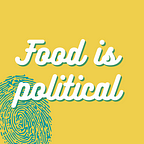Stuck between a rock and a hard place
As the reappearance of Bt Brinjal (a genetically modified crop) brings with it hot debates among academics, politicians, and NGOs, the question that remains is — which of these solutions can single-handedly secure biodiversity, farmer incomes, and nutrition?
Brinjal has woven itself into the fabric of Indian cuisine. It has been cultivated in India for 4000 years, and the country holds a big 26% of the world production for Brinjal. Yet every monsoon, the pest Eggplant Fruit and Shoot Borer (EFSB) attacks 95% of the crop. In response, in early September 2020, the government approved biosafety research trials for Bt Brinjal.
The crop has been shrouded in controversy since the early 2000s, which tapered with the penultimate moratorium imposed after much protest by the former Environmental Minister, Jairam Ramesh. The moratorium was imposed in 2010 to halt the company — Maharashtra Hybrid Seeds Co (Mahyco) — that came up with a Bt Brinjal variety. The Biological Diversity Act 2002 prevented foreign organizations from accessing Indian biological resources, and since 26% of Mahyco’s stake was owned by a foreign national company, Monsanto, the government had to take steps to stop the trials in its tracks. This was aided by the strong winds of opposition by environmentalists, NGOs, and farmers.
However, in 2020, the Genetic Engineering Appraisal Committee (GEAC) has approved Bt Brinjal varieties — Janak & BSS-793 — manufactured by the indigenous Indian Agricultural Research Institute (IARI). This preliminarily solves the issue of foreign involvement in a country’s food security matters. The crop is designed to attack the alkaline digestive system of the EFSB and effectively killing the larvae and securing the plant
The controversy continues as reports of the still illegal Bt Brinjal being sold in Haryana had erupted long before the approval by the GEAC. When Mahyco couldn’t proceed with its plans in India, it also began supplying the seeds to Bangladesh and the Philippines around 2006. Seeds were sold across the border, and in commonplace areas such as bus stands. Mahyco further faced biopiracy allegations of using indigenous species without the required permission and continued to refute the same.
In the steps to legalize Bt Brinjal, supporters of the technology share statistics that an enormous amount of 4.5 kgs of insecticides are applied per hectare of Brinjal to shield them, which is second to only Chilli. Since the larvae tend to find shelter in nooks, they’re often not killed with single pesticides or applications. Bt Brinjal would reduce these figures by 80%, and double yield.
However, groups such as the Swadeshi Jagran Manch advocate that Genetically Modified (GM) Crops could hurt trade security and allow non-domestic players and entry into our markets. Other groups including Coalition for a GM-Free India, believe that the Bt Brinjal was approved without public consensus and evident conflicts of interests. Dr. Anand Kumar, who is responsible for developing the variety was also a regulator at GEAC while his product was under review.
The greater overarching point of dissent rests with the threat to biodiversity and the development of resilience among the pests. Two cases that support their claims include Bt Cotton and Bt Brinjal in Bangladesh.
The same issues were pointed out when Bt Cotton was introduced, with developers claiming it would target the Pink Ball Worm pest. The Bt technology worked initially, but the Pink Ball Worm became resistant to the Bt toxin within five years. This eventually meant more pesticides and lower yields. Further, the Bt Brinjal is a cross-pollinated crop, hence it could inadvertently affect other crops.
In Bangladesh, farmers initially saw a colossal dip in pesticide use with Bt Brinjal. However, not long after in 2018, farmers were spending an average of $23.58 per hectare on insecticide — 37% more than the pre-Bt levels. Farmers lost between 15,000–30,000 Bangladeshi Taka, while local varieties continued to fetch higher prices, according to Farida Akhter, of UBINIG in Bangladesh.
Madhav Gadgil, an ecologist, stated that the government’s own task force on biotechnology had recommended that GM crops will not be allowed in biodiversity-rich areas. It was noted to be a threat to sustainability and nutrition.
However, the question that this leaves everyone with, is what grounds remain for experimenting with GM Crops? As nature continues to adapt and become resilient to technological advances, how is it that government policies can continue to ensure food security, biodiversity, consumer protection, and farmer incomes?
Proposed solutions adopted in Europe and the United States include demarking areas outside plots where GM Crops are grown, and a regime that labels every crop sold in the market as Bt or natural. However, they are unlikely to be effective in the Indian context as farmers own small plots of land, and goods are widely sold loose.
A solution that was proposed by GV Ramanjaneyulu, Director for Centre for Sustainable Agriculture aims at looking at prices rather than productivity. Farmers need fair prices that cover the cost of cultivation. The National Institute of Agricultural Economics and Policy Research raised concerns that Bt technology could potentially create surpluses and crash prices.
To draw to an end, the answer isn’t simple, and nor can it be attained in a short span of time. A simple approach of rigorous testing and policy frameworks does not hold much credit given the loopholes that glare back at us. However, a harder and much more arduous approach can look at diversifying our own crop production and nutrition bank in the future. As things are likely to get messy in the future, where is it that you stand?
